A rotating shift schedule is a system used by organizations to distribute work responsibilities fairly across different time blocks, ensuring 24/7 operational coverage and minimizing any single employee’s exposure to unpopular or demanding shifts.
It involves creating a schedule that rotates employees through different shifts, allowing them to experience a variety of working hours and ensuring that the workload is evenly distributed.
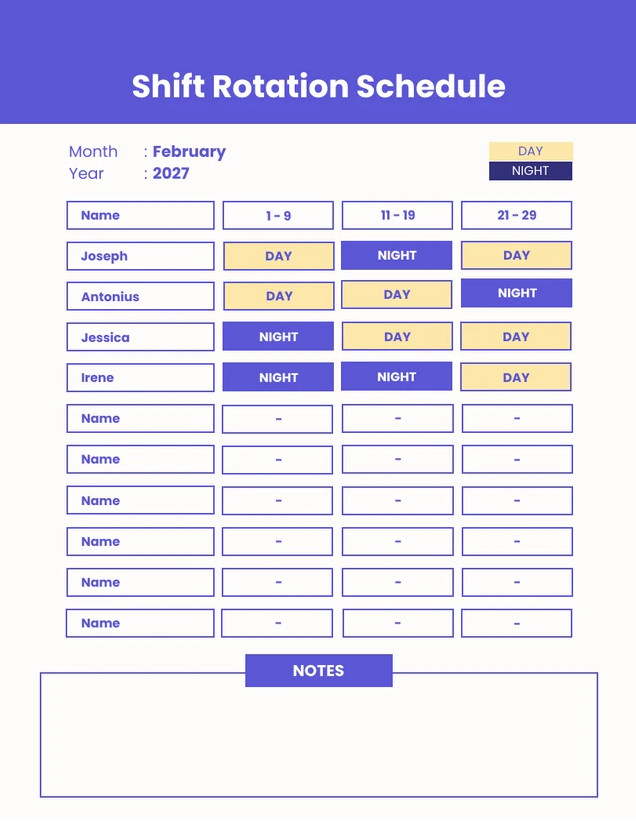
Why Use a Rotating Shift Schedule?
Implementing a rotating shift schedule offers numerous benefits for both employees and organizations. Here are some of the reasons why this type of schedule is advantageous:
1. Fairness and Equity: By rotating employees through different shifts, a rotating shift schedule ensures that no one is consistently stuck with undesirable or demanding shifts. This promotes fairness and equity among employees, reducing the likelihood of resentment or burnout.
2. 24/7 Operational Coverage: Many industries require round-the-clock operational coverage. A rotating shift schedule ensures that there are always employees available to handle work responsibilities regardless of the time of day. This can be crucial in industries such as healthcare, transportation, and customer service.
3. Increased Productivity: Rotating shifts can help prevent fatigue and monotony among employees, leading to increased productivity. When employees experience different working hours, they remain engaged and motivated, resulting in higher quality work output.
4. Employee Satisfaction: Offering a variety of shifts can contribute to employee satisfaction and work-life balance. Employees have the opportunity to experience different working hours, which can accommodate their personal preferences or obligations outside of work. This flexibility can lead to higher job satisfaction and lower turnover rates.
How to Implement a Rotating Shift Schedule
Implementing a rotating shift schedule requires careful planning and communication. Here are some steps to consider:
1. Assess Workload and Coverage Needs: Determine the number of employees needed for each shift to ensure operational coverage. Consider peak hours, customer demand, and any specific requirements of the job.
2. Define Shift Types: Determine the different shift types that will be included in the rotation. Common types include morning, afternoon, and night shifts. You may also consider incorporating weekends or holidays into the rotation.
3. Create a Template: Design a rotating shift schedule template that can accommodate the number of employees and shift types. This template should display the rotation pattern and provide enough space for individual employee names.
4. Communicate with Employees: Explain the benefits of the rotating shift schedule to employees and address any concerns they may have. Provide clear instructions on how to read and interpret the schedule. Make sure all employees have access to the schedule.
5. Rotate the Schedule: Begin implementing the rotating shift schedule, ensuring that each employee experiences a fair distribution of shifts over the designated period. Monitor and adjust the schedule as needed to address any unforeseen issues or conflicts.
Examples of Rotating Shift Schedules
Here are some examples of rotating shift schedules:
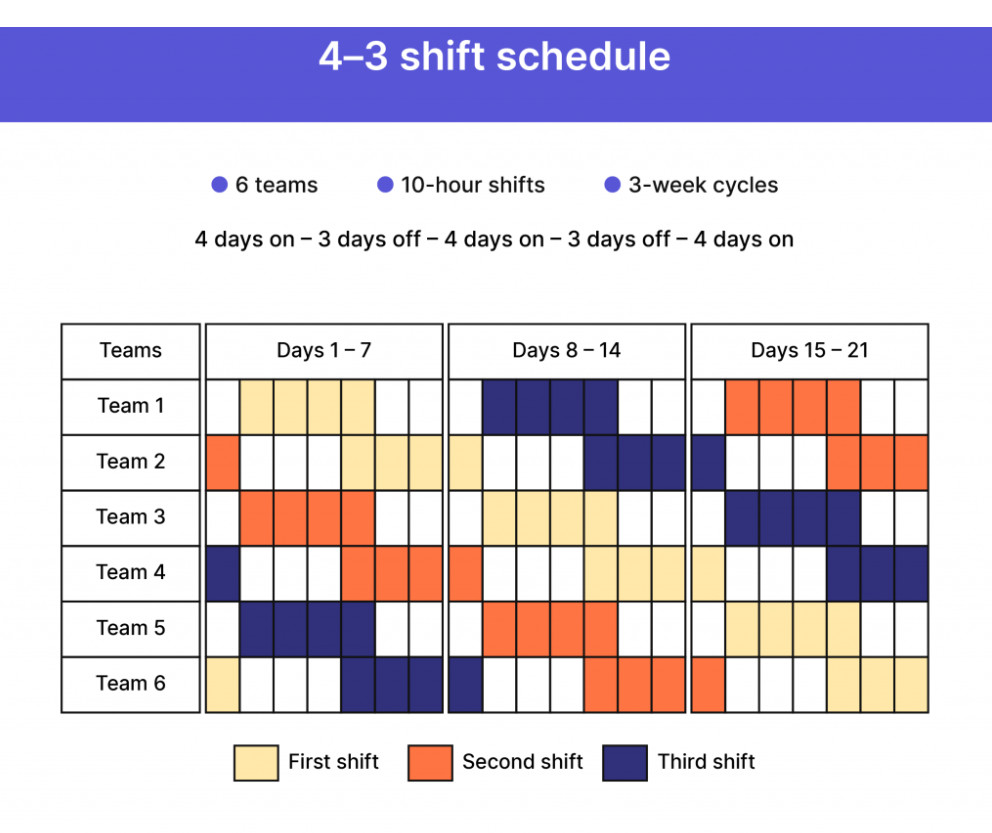
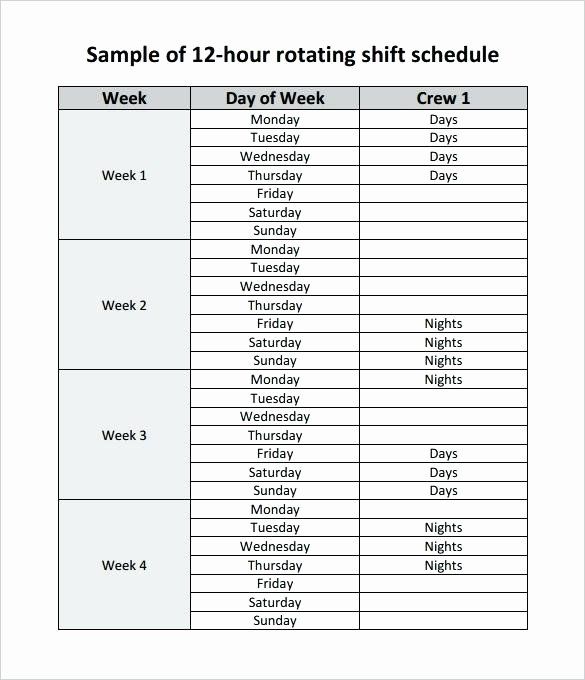
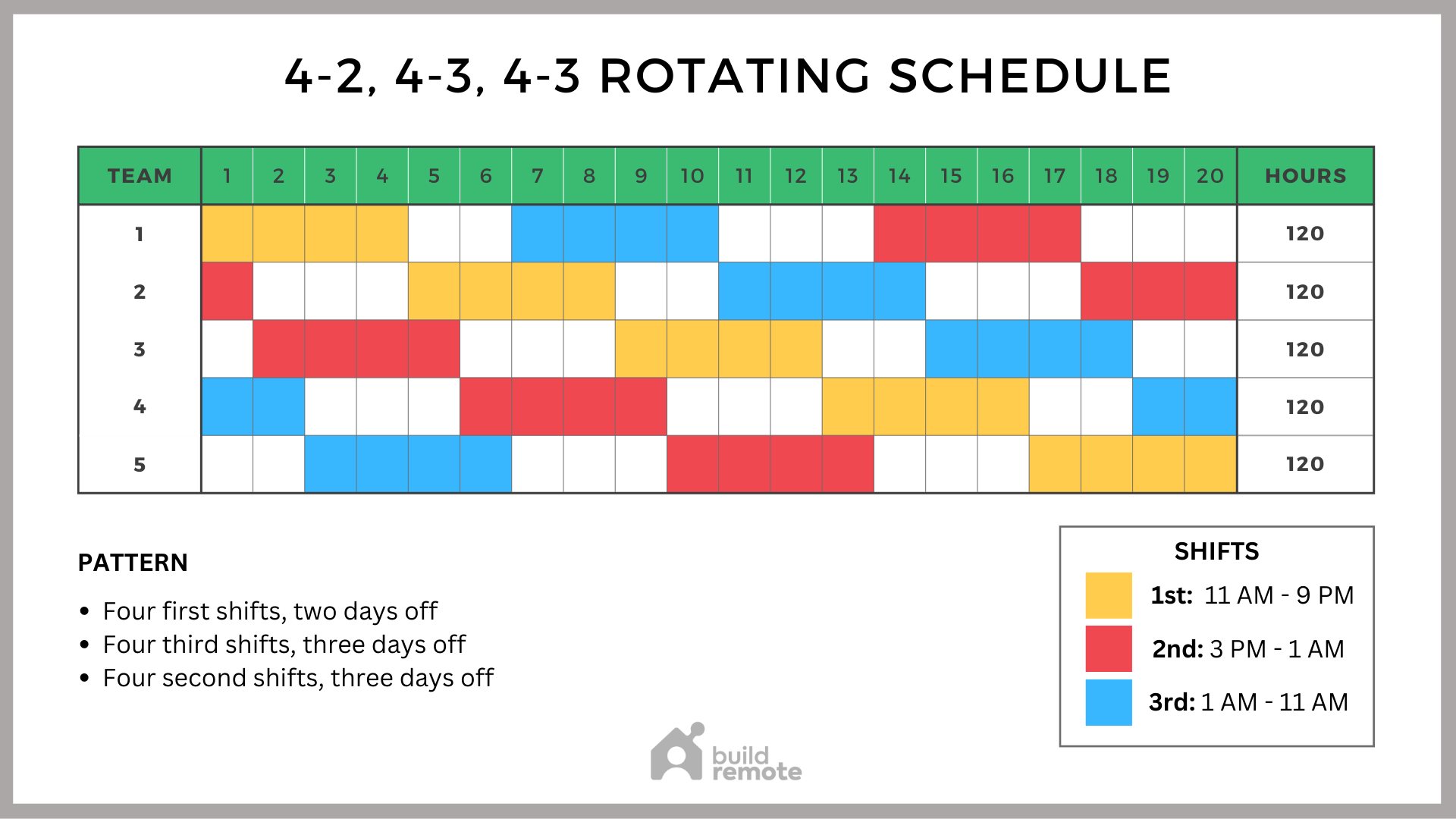
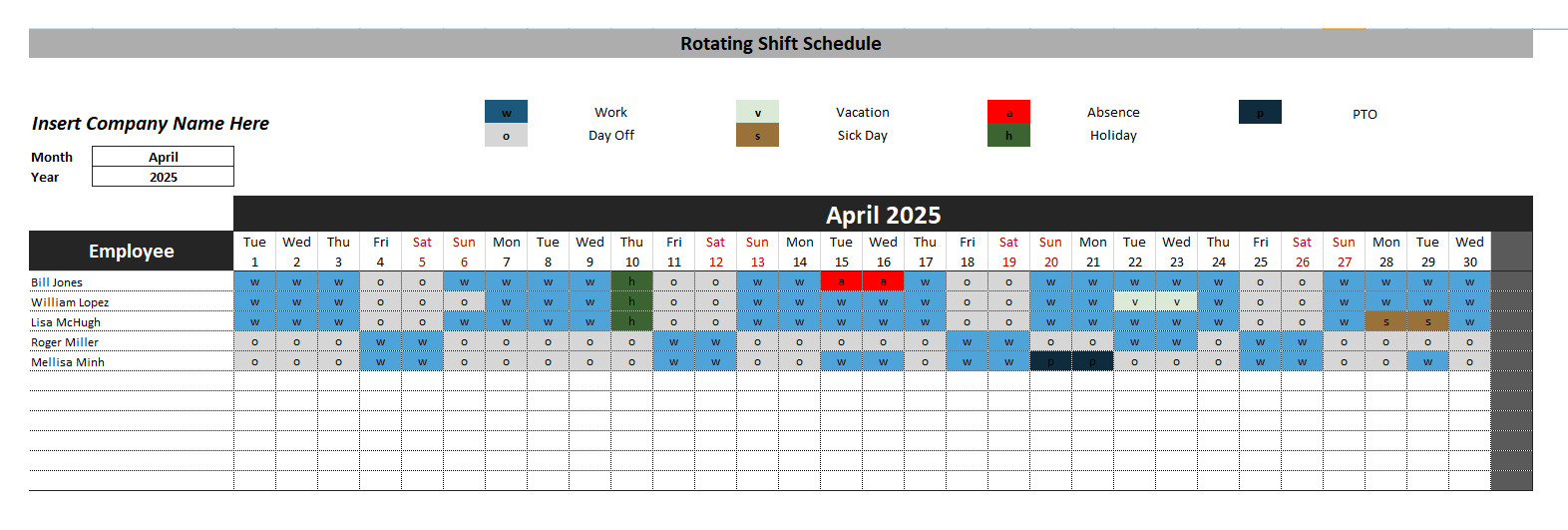
Tips for Successful Implementation
To ensure the successful implementation of a rotating shift schedule, consider the following tips:
- 1. Plan for Shift Handovers: Ensure that there is ample time for employees to hand over their responsibilities at the end of each shift. This will help maintain continuity and prevent any gaps in work coverage.
- 2. Consider Employee Preferences: Take into account any employee preferences or requests when creating the rotation schedule. While it may not be possible to accommodate everyone’s preferences, showing flexibility can boost employee morale.
- 3. Provide Ample Notice: Give employees sufficient notice of their upcoming shifts to allow for proper planning and adjustments to personal schedules.
- 4. Regularly Review and Update: Regularly review the rotating shift schedule to address any issues or conflicts that arise. Seek feedback from employees and make adjustments as necessary to improve the schedule.
- 5. Consider Automation: Utilize scheduling software or tools to automate the rotation process, making it easier to manage and track employee schedules.
- 6. Monitor Employee Well-being: Pay attention to employee well-being and watch for signs of fatigue or burnout. Offer support and resources to help employees manage the demands of rotating shifts.
Conclusion
A rotating shift schedule is an effective way to distribute work responsibilities fairly, ensure 24/7 operational coverage, and minimize any single employee’s exposure to unpopular or demanding shifts.
By implementing this type of schedule, organizations can promote fairness, increase productivity, and enhance employee satisfaction. With careful planning and communication, a rotating shift schedule can be successfully implemented, benefiting both employees and the organization as a whole.
Rotating Shift Schedule Template – Download